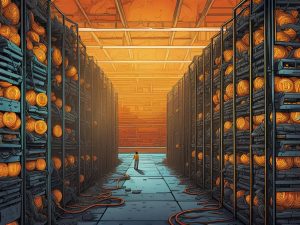Revolutionizing Electric Vehicle Manufacturing with Mega Casting
Automakers are embracing mega casting as a game-changing technique in the production of electric vehicles (EVs), offering a more cost-effective and efficient way to manufacture vehicles. Mega casting, also known as giga casting, involves creating large, high-pressure die-cast aluminum components that replace traditional stamped steel parts in EVs. This innovative method is revolutionizing the EV industry by making vehicles lighter, simpler, and cheaper. Tesla has been at the forefront of implementing mega casting, setting a new standard for manufacturing techniques in the automotive sector. Rivals are quickly following suit, investing billions in this technology to enhance their EV production capabilities. Here’s why Tesla and other EV makers are betting big on mega casting:
The Benefits of Mega Casting in EV Manufacturing
- Mega casting simplifies the manufacturing process by producing large, single-piece components that replace multiple smaller parts.
- It reduces the weight of vehicles, improving fuel efficiency and increasing range for customers.
- Mega casting offers automakers the opportunity to streamline production, cut costs, and enhance overall manufacturing efficiency.
By embracing mega casting, automakers can revolutionize the way EVs are designed, manufactured, and assembled, paving the way for a more sustainable and cost-effective future in the automotive industry.
The Challenges and Opportunities of Mega Casting in EV Production
While mega casting holds the promise of transforming EV manufacturing, there are also significant challenges that automakers must overcome to fully realize its potential:
- Some experts question whether casting very large parts will lead to significant weight reduction, as extra-large castings may be heavier than comparable sheet metal solutions.
- High scrap rates and defects in large castings could impact the overall quality and cost-effectiveness of EV production.
- Repairing vehicles with large cast components may be more expensive and complex, posing challenges for maintenance and aftermarket services.
Despite these challenges, mega casting presents a unique opportunity for automakers to rethink their manufacturing processes and create more efficient and sustainable EVs for the future.
The Future of EV Manufacturing with Mega Casting
As automakers continue to invest in mega casting technology, the future of EV manufacturing is set to undergo a significant transformation:
- Mega casting offers a more flexible and efficient way to produce EVs, allowing for faster product upgrades and improvements over the lifespan of vehicles.
- By adopting mega casting, automakers can reduce the number of parts needed for EV production, simplify manufacturing processes, and enhance overall product quality.
- Tesla’s innovative approach to mega casting has set a new standard for EV manufacturing, inspiring other automakers to embrace this revolutionary technology.
Hot Take: Embracing the Future of EV Manufacturing
The automotive industry is on the cusp of a major transformation with the widespread adoption of mega casting in EV production. By leveraging this innovative technology, automakers can create more cost-effective, efficient, and sustainable electric vehicles for the future. As the demand for EVs continues to rise, mega casting offers a promising solution to meet the growing needs of the market and drive the industry towards a more sustainable and environmentally friendly future.





 By
By
 By
By
 By
By

